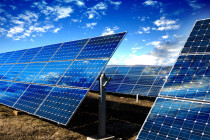Hemp Supercapacitors, now that’s a mouthful. To be completely honest, most of what I thought I knew about capacitors was largely informed by Marty McFly and Doc Brown of Back to the Future. Turns out, they are not only “what makes time travel possible” – in Hollywood, at least – they are more commonly associated with the storage of electrical energy.
Supercapacitors, as the name implies, are electrical components that hold “hundreds of times more electrical charge quantity than a standard capacitor.” As Wikipedia puts it they “bridge the gap between electrolytic capacitors and rechargeable batteries“
The real-life capacitor is so ubiquitous that most electrical products involve at least one for some purpose!
The key advantage supercapacitors have over other energy storage devices is that they can charge and discharge within seconds, rather than taking hours to recharge like today’s rechargeable batteries. But they do lack what’s known as energy density, which means that they cannot store as much energy as batteries. In an effort to increase energy density, researchers are looking to maximize efficiency in electrodes — a key component of supercapacitors.
Enter Hemp Supercapacitors:
A recent development could see manufacturing of electrodes that are easy to produce, cheaper, and hold as much energy as traditional graphene-based devices — graphene being the current gold standard in the industry.
It turns out that electrodes made from hemp-based carbon nanosheets produce supercapacitors that outperform commercial supercapacitors in both energy density and the range of temperatures in which they can work.
The discovery was made by a team of researchers from the University of Alberta, National Institute for Nanotechnology (NINT) NRC, and Alberta Innovates-Technology Futures, led by chemical and materials engineering Professor David Mitlin (who is now at the Clarkson University in New York).
“Our work actually opens up a very cheap and mass-producible manufacturing method for graphene-quality material—something that has never been achieved before,” says Mitlin.
Long considered one of the best materials for supercapacitor electrodes, graphene is very expensive to manufacture, costing as much as $2,000 per gram. Tasked with finding a less expensive alternative, the team developed a process for converting fibrous hemp waste into a unique graphene-like nanomaterial, which, surprisingly, works better than graphene and can be manufactured at a fraction of the price — between $500 and $1000 per tonne.
Advocates of the hardy hemp plant won’t be surprised to learn about hemp supercapacitors, as the list of hemp applications is long and continues to grow. There are some specific characteristics making hemp a natural choice for supercapacitor electrodes.
The inner bark of hemp has yarn-like fibers or “bast fibers,” consisting of ~ 70% crystalline cellulose, the key ingredient that allows the transformation of ordinary hemp fibres into supercapacitor-ready nanosheets.
The recipe for hemp supercapacitors is relatively straightforward: after slowly ‘stewing’ the fibres under pressure in 180°C water for 24 hours, potassium hydroxide is applied to the material along with a blast of high heat, resulting in graphene-like carbon nanosheets. The uniquely ‘crumpled’ structure of the hemp-based nanosheets means a much greater surface area for electrically charged ions to easily and effectively transport a charge across the material. This is where hemp particularly outshines graphene as the material base for electrodes.
Pure graphene is very flat and thin — basically a one-atom thick sheet of carbon atoms. For this reason, sheets of graphene tend to stack on top of one another when they are laid out along a flat surface. This means a decrease in the performance of the device over time as the surface area of the electrode decreases itself .
Crumpled hemp-based nanosheets, reduce the stacking tendency and are more ‘holey,’ which serves to further increase ion-accessible surface area. These sheets are also highly electrically conductive; although not as conductive as graphite, Mitlin says they are 10 times more conductive than high quality art-activated carbon.
In addition to being easy to produce and dramatically cheaper, hemp nanosheet-based supercapacitors perform well, yielding energy densities as high as 12 Watt-hours per kilogram, which is two to three times higher than commercial counterparts. They also operate over an impressive temperature range, from freezing to more than 90°C.
“We were delighted at how well this material performed as supercapacitor electrodes,” says Mitlin. “We’re past the proof-of-principle stage for the fully functional supercapacitor,” he says. “Now we’re gearing up for small-scale manufacturing.”
From durable cloth to building materials and now hemp supercapacitor electrodes — hemp is rapidly emerging as an eco-friendly super-crop with a multitude of innovative uses and applications. Who knows, perhaps someday we may unlock the secret to Cannabis-related time travel — and not just the THC-induced variety!
About The Author

- Serial Entrepreneur, Technologist and Inventor my objective is to develop useful products that have a net positive effect in the lives of those that use them and the environment that we live in. CEO of Mission LED Lighting Company Ltd.
- 2017.12.27UncategorizedSaving the World and Saving Money: Green Home Improvements Every Homeowner Should Make
- 2017.01.17Be green & save5 Simple Green New Year Resolutions For 2017
- 2016.11.09LED factsReplacing a 400 HID Lamp for an LED
- 2016.09.26Be green & saveVintage LED Bulbs Make What’s Old New Again





1 Comment